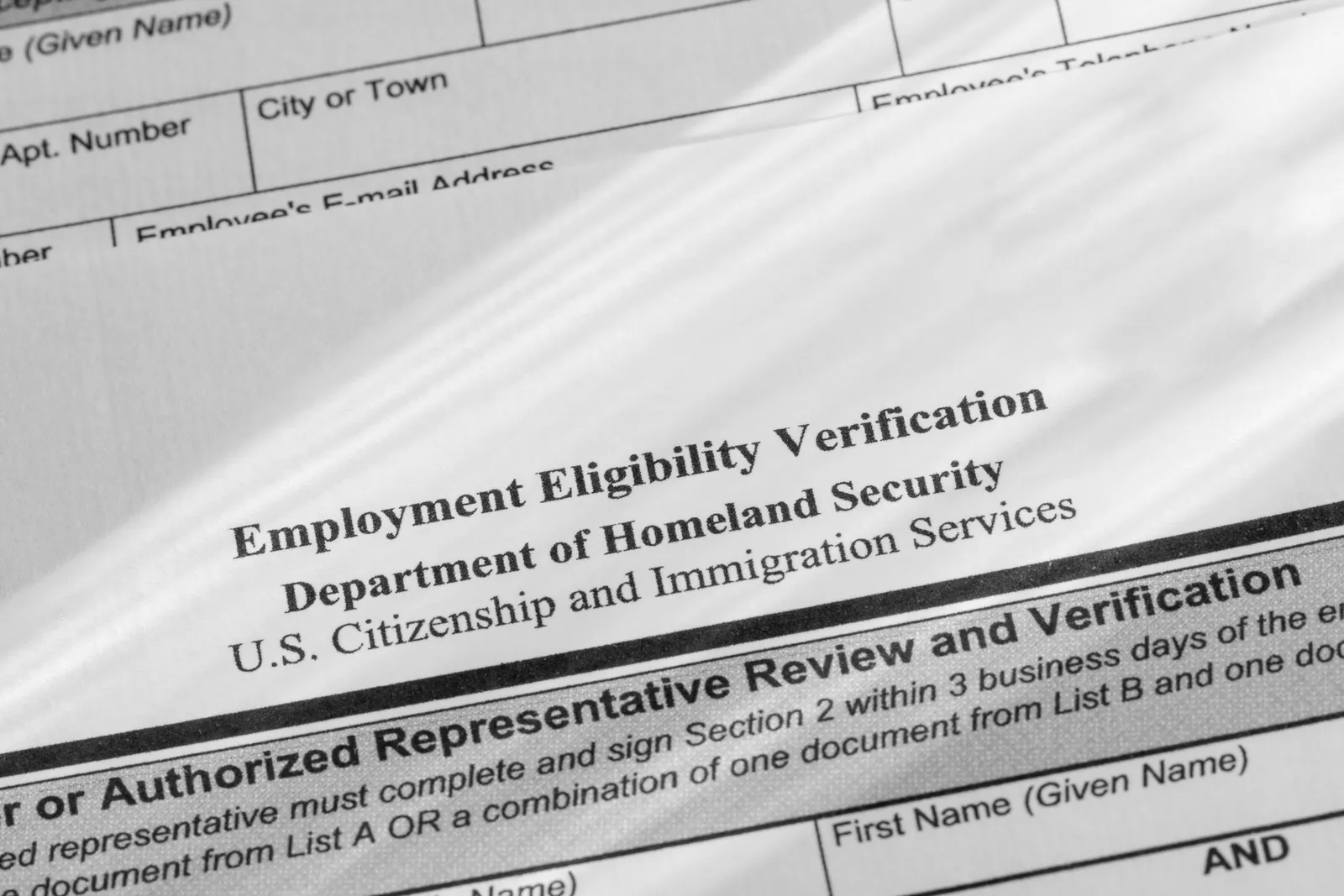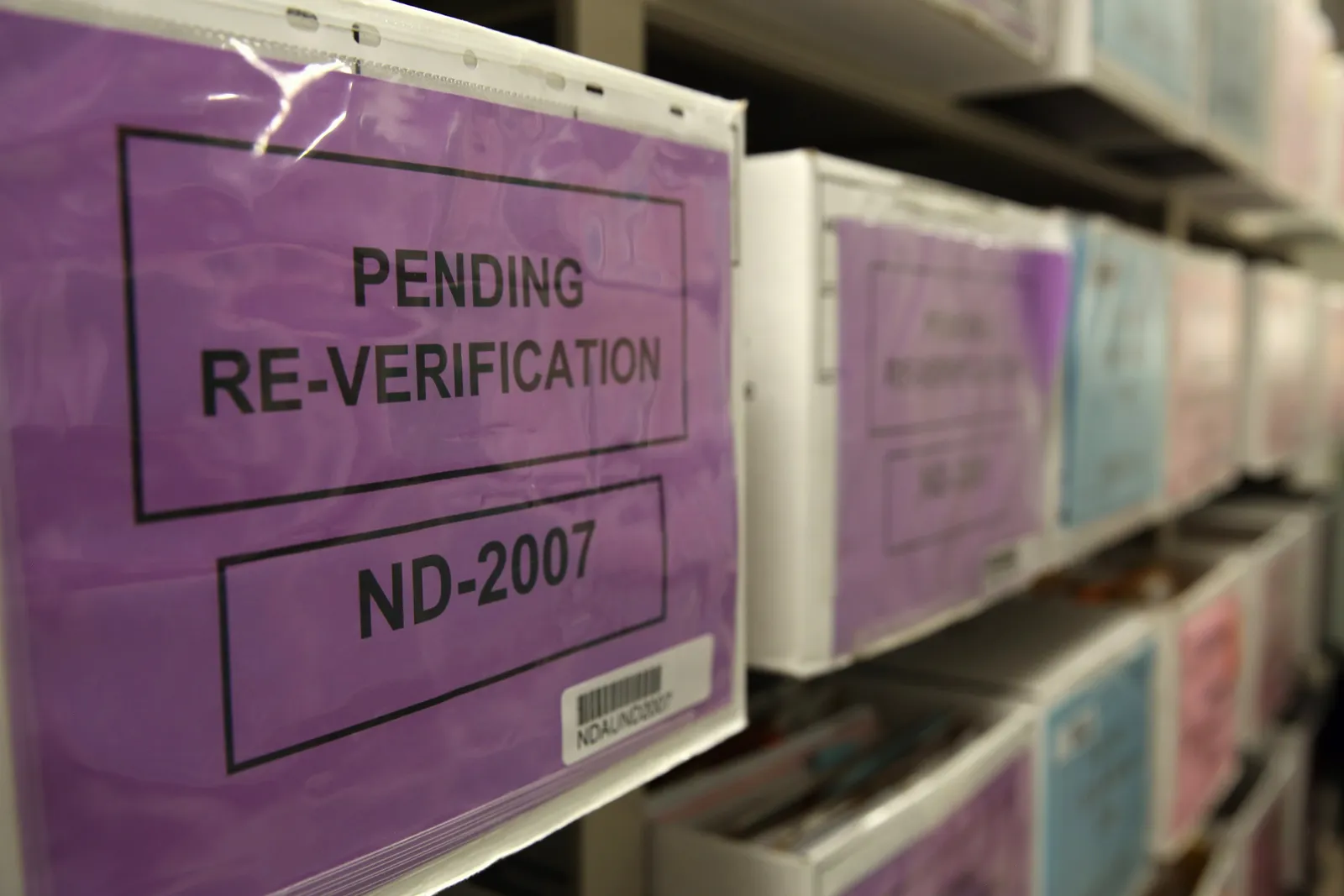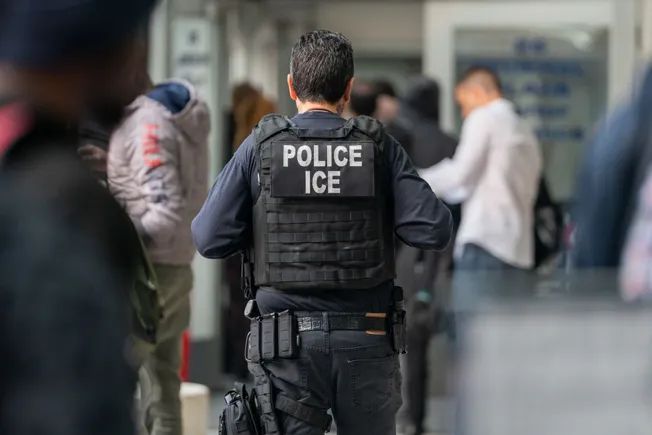Federal immigration authorities may be gradually boosting their enforcement activities, but the slow pace has not changed employers’ need for caution, employer-side immigration lawyers told HR Dive.
Prior to President Donald Trump’s inauguration, incoming officials promised large-scale worksite enforcement. So far, U.S. Immigration and Customs Enforcement has targeted small entities for raids, with recent examples including a Louisiana construction site and a Philadelphia market. But HR departments also may need to prepare for an increase in Form I-9 audits.
ICE strategy remains a black box
I-9s, used to verify whether an employee is eligible to work in the U.S., are required for all workers. Form I-9 audits have picked up across the country since Trump’s inauguration, according to Chris Thomas, partner at Holland & Hart, and that trend is expected to continue.
Part of ICE’s strategy could involve quotas: Thomas said he spoke with one ICE agent “in a small location in Vermont” who was tasked with serving notices of Form I-9 inspection to at least five employers per week. Thomas added that he expects ICE to expand its capacity to conduct audits by repurposing existing agency support staff and hiring outside contractors.
“That has been the plan ever since the election,” Thomas said; Trump, for example, signed an executive order on the day of his inauguration calling on the secretary of homeland security to “significantly increase the number of agents and officers” at agencies including ICE.
“Right now they only have the capacity to do the small audits, but we have every reason to believe that they will expand their capacity and that they will move to much larger enforcement actions,” Thomas continued.
ICE said it does not assign quotas to field offices, which focus on identifying, targeting and apprehending noncitizens with criminal convictions or outstanding warrants as well as those who have illegally re-entered or have a final order of removal.
ICE referred HR Dive to the U.S. Department of Homeland Security when asked about potential staffing increases. DHS declined to comment.
The administration’s ramp-up enforcement approach is somewhat expected in part due to an earlier lack of funding, said Bruce Buchanan, senior counsel at Littler Mendelson. Federal lawmakers set out to address the agency’s budget shortfall in a recent budget resolution, which provided ICE close to $10 billion in funding.
Buchanan said he has not heard of ICE using the kind of inspection notice quotas described by Thomas, but he said agents may opt to meet such requirements by handing employers a flier for the agency’s IMAGE program, a voluntary partnership initiative between the federal government and the private sector, rather than issuing a formal inspection notice. “That apparently counts as a notice of inspection,” Buchanan said.
It’s also not yet clear how demanding ICE will be with individual employers. Buchanan said one of his clients was contacted by Homeland Security Investigations and asked to voluntarily provide its Form I-9s to the agency by a certain date, but upon further communication was told to take as much time as needed.
ICE officers stage a raid to arrest an undocumented immigrant on April 11, 2018, in New York, N.Y. The agency’s investigators may issue employers Form I-9 notices of inspection as part of their enforcement efforts.
John Moore via Getty Images
‘It terrorizes the community’
Employers in the restaurant, construction and hospitality industries are “on pins and needles” in anticipation of the Trump administration’s enforcement efforts, said Mary Pivec, attorney at Pivec & Associates PLLC. These industries, alongside warehousing, light manufacturing and assembly and shipping and receiving, are expected to be primary targets, she added.
Pivec said ICE’s service of inspection notices is “spotty” but that she has seen cases in which groups of five to six agents confront workers who may be detained if they cannot answer the agents’ questions and produce documentation. In early February, agents detained multiple staff members at a Baltimore restaurant; staff also were asked to mail their Form I-9 paperwork to ICE, the Baltimore Banner reported.
“These arrests are taking place,” Pivec said. “It terrorizes the community.”
ICE’s methods for determining which businesses to enter vary. David Adams, account executive at background check provider SafestHires, said the agency may rely on word of mouth, particularly if it is well known in a community that an employer may seek to employ noncitizens who are unauthorized to work.
Disgruntled former employees likewise may tip ICE off to potential violations. “Those are the easy pickings where they’ve already got the intel to do this,” Adams said.
An ICE spokesperson said via email that the agency targets employers who violate employment laws.
ICE isn’t the only agency that may be evaluating employer compliance with immigration law. U.S. Citizenship and Immigration Services’ Fraud Detection and National Security Directorate, which conducts compliance reviews of certain visa petitions, also has stepped up worksite enforcement, Pivec said.
U.S. Customs and Border Patrol is also a concern. Given the administration’s high-profile detentions of international travelers, students and job seekers, some employers are concerned about international travel. Thomas said companies are reassessing whether they can afford to take the risk of sending workers on international business trips, in part because of fears that authorities could conduct reviews of travelers’ electronic devices, which may raise privacy concerns.
“This is a time when CBP, at ports of entry, is exercising greater scrutiny,” said Daniel Brown, partner at Fragomen. “It’s well worth just making sure, checking with the company attorneys to make sure that travel is okay depending on particular circumstances.”

Employers may face civil penalties for Form I-9 paperwork violations.
JLGutierrez via Getty Images
Employers’ exposure
There are three primary concerns employers might have when it comes to immigration enforcement actions, according to Thomas: civil fines, potential criminal exposure and overall operational effects. “In some ways, they are all equally terrifying,” he said.
Civil penalties for Form I-9 paperwork violations alone max out at $2,861 per violation, while those for knowingly hiring, recruiting, referring or retaining unauthorized noncitizens max out at $5,724 for first-time offenders. Per-violation penalties for the latter increase with subsequent offenses and are capped at $28,619 for third or more offenses.
If employers are found to have engaged in a pattern or practice of knowingly hiring, or continuing to hire, unauthorized noncitizens, they may face fines and penalties potentially including a prison sentence, according to USCIS. Such sentences also may be sought in cases where employers are found to have engaged in fraud, false statements or misuse of visas, immigration permits or identity documents.
Thomas said authorities have homed in on employers’ use of electronic Form I-9 systems, which HR Dive previously reported as being an enforcement target for the Trump administration. Thomas advised employers to prepare for the possibility that they will need to produce all appropriate audit trails to agents upon request — and agents may even ask employers to offer a live demonstration of how their electronic program works, he added.
“I’ve seen it before,” Thomas said when asked whether ICE requests to demonstrate electronic Form I-9 programs are a new tactic under the second Trump administration. “Now they’re being much more aggressive about it.”
DHS issued regulations on the use of electronic Form I-9s in 2006, but employers have received little guidance with respect to how it will enforce those regulations, said Fragomen’s Brown. The lack of any publicly available judicial cases in which an employer has been penalized for infractions of electronic I-9 regulation also contributes to lack of public awareness of the issue, he added.
Brown said the market for electronic I-9 systems is “highly fragmented” and that I-9 programs vary in quality in terms of their compliance with existing regulations.
“I don’t think anyone’s got bad intentions,” he said of potentially noncompliant systems. “What makes sense from a programming perspective may not fit what ICE intended.”
The two areas of primary concern, Brown added, are the use of employees’ electronic signatures to complete attestation requirements on a Form I-9 and the audit trails captured by an employer’s system, which are records that show what actions have been taken with respect to a specific form.
“People should be aware that there are cases in progress where some employers are being fined, or where ICE is seeking to fine employers for substantial sums of money, millions of dollars, for the systems that employers are using,” Brown said.

Immigrant registration files are stored in the records room of the USCIS Queens office on May 30, 2013, in the Long Island City neighborhood of the Queens borough of New York, N.Y. Employers are increasingly seeking preemptive audits of their employment authorization procedures, one attorney told HR Dive.
John Moore / Staff via Getty Images
How to prepare for visits
Thomas said he encourages employers to take three primary steps in preparation for an ICE visit:
- Train staff to detect potential fraud, including in employment authorization documents.
- Keep copies of all documentation.
- Consider enrolling in E-Verify to show evidence of compliance efforts.
“When they have taken those steps, they should begin rigorous I-9 adults with the support of outside counsel,” Thomas continued. In the event that an employer suspects fraud on the part of an employee, they should take appropriate steps to meet with the employee and give them an opportunity to produce documentation. Failing that, termination and onboarding of new employees with a more rigorous process is the next step, Thomas said.
Buchanan said his firm has seen a “massive uptick” in clients undertaking preemptive Form I-9 audits since the 2024 presidential election “and frankly, it continues into today.”
There is also training of staff on the intricacies of the specific sorts of warrants ICE issues, Pivec said. Sometimes agents will seek to explain the I-9 compliance process to an employer’s representatives, and it may be in an employer’s interest to listen; “If you think it’s going to make the agency happy to run through a spiel with you […] let them do it,” Pivec said.
But it’s another thing entirely if an agent wants to interrogate HR staff about their compliance process. “No representative of a company should be alone with an agent,” Pivec said, “and no representative should be volunteering anything to an agent at all without a subpoena and without legal counsel there to protect them.”
Overall, employers should be in a defensive posture when it comes to immigration compliance and should “act accordingly,” Pivec said. “It’s not a time to take risks.”






Leave a Reply